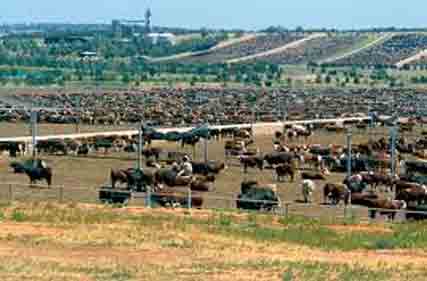 Australia’s latest feedlot survey results, published by the Australian Lot Feeders’ Association (ALFA) and Meat & Livestock Australia (MLA), show numbers of cattle on feed remaining steady at 1,258,377 head in the September quarter.
Australia’s latest feedlot survey results, published by the Australian Lot Feeders’ Association (ALFA) and Meat & Livestock Australia (MLA), show numbers of cattle on feed remaining steady at 1,258,377 head in the September quarter.
ALFA’s President, Barb Madden, said the national numbers on feed remained relatively stable in most states.
‘Increased numbers on feed in the larger lot feeding states of NSW and QLD balanced out the lower numbers in Victoria and seasonal reduction in Western Australia,’ Mrs Madden said.
Numbers on feed in QLD, NSW and SA rose by 2.1%, 2.9% and 1.3% respectively, while Victoria and WA numbers dropped 4.9%, and 41.9% across the quarter.
‘Historically high numbers on feed over the quarter reflect continued strong demand for grain fed beef but also serve as a reminder of the role the feedlot system plays when conditions become less favourable in the paddock,’ Mrs Madden said.
‘We have seen strong placement of grain fed beef in our key export markets of Japan, Korea and China occurred during the last quarter and its pleasing to see continued demand for our product in these markets despite cost-of-living pressures globally.
‘Increased feeder cattle availability has been driven partly by drying conditions, particularly in northern NSW and central QLD. No one likes to see conditions dry off, especially given the amazing run of good seasons we have enjoyed. Feedlots have been able to absorb some of this turnoff and it’s a reminder of the role we can play in evening out the impact of climate variation for the supply chain.’ said Mrs Madden.
National capacity increased by 1.4% to 1.58 million head. Utilisation rates remained steady at 80%.
MLA’s Global Supply Analyst, Tim Jackson, said the September quarter saw increases in grain fed exports across all major overseas markets.
‘Grain fed beef exports are at an all-time high in 2023, with exports reaching over 85,000 tonnes in the September quarter, and over 234,000 tonnes year-to-date.
‘The top three markets supported this record export year. After a slight easing in the second quarter, Japan and South Korea markets recovered, increasing by 3% and 10% respectively. Exports to China maintained growth for the third quarter in a row to 22,998 tonnes,’ Mr Jackson said.
Looking at cattle supply, Mr Jackson noted that saleyards saw increased availability of feeder cattle paired with eased national feeder steer indicator prices, which has been the case across the board as producers see to offload livestock supply.
‘Supply through saleyards was up 7% on last quarter, reaching 80,397 head. A 23% increase on yardings year-on-year. The NLRS feeder steer indicator dropped 46 cents on last quarter, experiencing a 42% downturn year-on-year.’
Mr Jackson also noted the Darling Downs wheat prices continued to climb in the September quarter, growing by 8% to $439/tonne.
‘This third consecutive increase in wheat prices continues to put pressure on overall ration costs and cost of gain and is somewhat dampening the impact of reduced feeder prices for lot feeders.’ Mr Jackson said.
-ALFA
